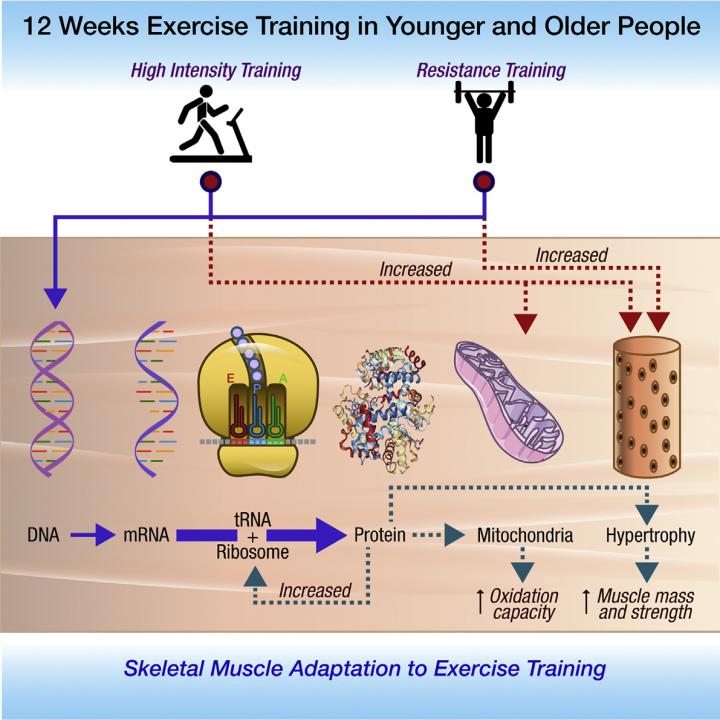
High intensity interval training effectively improved cardio-metabolic health parameters in aging adults. (Image by Robinson et al./Cell Metabolism 2017)
Researchers have zeroed in on the benefits of exercise on a cellular level. A new study describes how high-intensity interval training (HIIT), such as biking and walking, helps cells make more proteins for their energy-producing mitochondria and their protein-building ribosomes. The upkeep of mitochondria and ribosomes effectively slows down aging at the cellular level. The study enrolled participants from two age groups—18-30-year-olds and 65-80-year-olds—and enrolled them in three exercise regimens: one involving HIIT, another involving strength training, and the third, which combined both. Researchers then biopsied samples of tissue from the volunteers’ thigh muscles and compared the molecular makeup of their muscle cells to samples from sedentary volunteers. Their results showed that, while strength training helped build muscle mass, HIIT exercises yielded the most benefits on a cellular level.
Authors:
Matthew M. Robinson, Surendra Dasari, Adam R. Konopka, Matthew L. Johnson, S. Manjunatha, Raul Ruiz Esponda, Rickey E. Carter, Ian R. Lanza, K. Sreekumaran Nair
Corresponding author:
K. Sreekumaran Nair, Division of Endocrinology, Diabetes and Nutrition, Mayo Clinic. Email: nair.sree@mayo.edu
Original paper published in Cell Metabolism on March 7, 2017.


